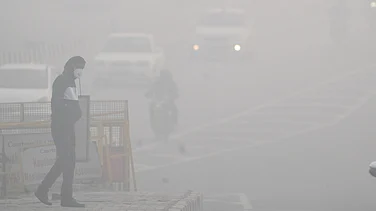It is the world’s largest migration till date—but the tragedy was that for many years it was forgotten by the whole world, and most of all in the country of its origin, India. A recent study has put the figure of those who were forced to migrate during the Partition of India in 1947 at 20 million—but even that may not do justice to the reality.
Despite such a huge displacement—as people walked in kafilas, came in trains, trucks, cars, on horseback, by boat and ship, and a few lucky ones came in planes—it was as though the country was afflicted by complete amnesia and their plight did not even merit a small space in history books. Yes, some did write about it, but it was always mostly about the violence that accompanied the Partition, and not about the refugees that were a result of it.
Basically, the Partition refugees were a unique category of people: they became homeless in their own country, many of them overnight. The memory of their humiliating exodus on both sides of the border is particularly painful as they were not part of the political dialogue and unaware that they would be pressurised to leave for either India or Pakistan based on their religion. Many had assumed that they would be allowed to stay in their well-settled homes. But experiencing threats and violence, they left their entire homes and lives behind, without realising they would never be able to return.
Despite this sacrifice, their refugee status was glossed over in the euphoria over Independence. One Partition survivor recollects how his family approached the then Prime Minister, Jawaharlal Nehru, whom they had known well, to share the sorrow of all they had lost. Meeting them at Teen Murti Bhavan, he bluntly said, “Be grateful you are alive.” And that was, ironically, all that the Partition refugees could console themselves with.
Because of this complete lack of interest and sympathy over their loss, till today we do not have precise numbers of who died and who survived the violence, the disease and hunger and the make-shift camps. No comprehensive study has been done till today of the enormous economic fallout of the Partition, nor on the undoubted social and mental trauma suffered by those millions who were displaced without warning. (But yes, at the two Partition Museums that our small NGO, The Arts And Cultural Heritage Trust, has set up in Amritsar and Delhi, we try to continuously build up the archives for a greater understanding of what the Partition refugees went through).
But at that time, in 1947, not just Nehru, but everyone assumed that this was the price the nation had to pay for Independence. Independence, and the struggle for it, became the bigger narrative. This was all that was taught in the schools and colleges because that was the positive story, the triumph of the politicians. Few were interested in the millions from Bengal, Punjab, Sindh who trudged wearily into a free India with little more than the clothes on their backs. Their families had been divided, their men shot at and killed, their children starving, their women raped and abducted—yet, there is no a single memorial made as a tribute to them.
But there had always been an effort to carefully separate the narrative of millions of refugees from the popular narrative of Independence. And so when the Union Jack came down on the 15th of August, 1947, in India, and a day prior to that on 14th August, in Pakistan—there was a palpable joy in the air. The euphoria lasted barely two days: on 17th of August the details of the Partition were announced. This information had been deliberately withheld from the citizens of the freshly carved up India and Pakistan—and so many including my own maternal grandparents had to flee and lost everything overnight. They left from Lahore with a small suitcase—never to see the house they had lived in, ever again. My grandfather went back to try to recover some of their belongings—but a family had already occupied it, and he managed to bring back just a few books that he felt the new occupants of the house would not need.
While setting up the two Museums on the Partition, we have come across countless heartbreaking stories of suffering—but also of heroism. The refugees, despite having lost so much continued to help each other and also members of the other community. Many became nation builders. Yet, when we began our research seven years ago—there was not even one complete published list where we could source the refugee camps that were set up in India and Pakistan. Thus we had to piece together the information of how the refugees arrived—and where they were forced to find some succour. Through their oral histories we collected the information of the condition of the camps, and how all too quickly the government had run out of funds for rehabilitation.
After all, this was a huge migration that took place in Punjab, while in Bengal people continued to migrate over the years. The condition of the refugee camps was marginally better in the North and in Delhi. Possibly being an area directly under the bureaucracy, camps in Delhi could be monitored. However, there are tragic stories of how the Sindhi community was forced to live in Ulhasnagar in appalling and cramped conditions. Similarly, who can forget how the refugees in Bengal were told to relocate to Dandakaranya and had to face bullets if they refused to go. Refugees were even re-located in the Andamans.
In our research we have found that Partition refugees carry with them a huge amount of nostalgia of their life pre-1947. Unlike other forced migrations, where the refugee may never want to return to his or her homeland, in this case, surprisingly, many Partition refugees long to cross the border for one last visit to their old home. And unlike other cases of forced migration, they are greeted with garlands and banquets on the other side. In our museums, we have a gallery of Hope and Courage which is dedicated to these experiences—of how people went “home” to discover that they are treated like honoured guests. In this fashion, many Partition refugees can never really break their bonds with their lost homeland.
However, the scars they carry are indelible; many say the Partition was not required and badly executed. Their own personal narratives are indicative of the fact that their lives before Partition were harmonious, each community respecting the separate identity of the others. Their pre-Partition memories are full of love and longing.
Sometimes through art and related mediums, you derive a fresh interpretation leading to many hidden histories being revealed. Within our two Museums as well, we have placed not only art by the masters such as Krishan Khanna, Satish Gujral, Amarnath Sehgal,
S L Parasher and Jogen Chowdhury who were eyewitnesses to the Partition, but also from contemporary artists such as Arpana Cour, Veer Munshi and Debashish Mukherjee.
(Views expressed are personal)
(This appeared in the print as 'The Forgotten Narrative')
Kishwar Desai is Chair, The Arts And Cultural Heritage Trust





















